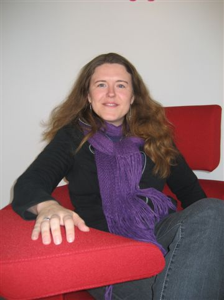Single Molecule Force Spectroscopy of self-complementary hydrogen-bonded supramolecular systems: dimers, polymers and solvent effects
Promotion date: 19 May 2011
Promotor: Prof. dr. Julius Vancso
Assistant promotor: Prof. dr. Holger Schönherr
| The work described in this thesis is aimed towards a better understanding of the structure-property relationships of supramolecular assemblie,s with a specific focus on hydrogen-bond dimers and polymers. Since supramolecular, hydrogen-bonded systems are nowadays used and further developed as building blocks e.g. for self-healing polymers and molecular motors, single molecule measurements can provide new molecular level insight to support this development for future applications. The experimental work covers the synthesis and characterization of self-assembling supramolecular hydrogen-bonded arrays in the bulk as well as at surfaces. In particular atomic force microscopy-based single molecule force spectroscopy (AFM-SMFS) was used to investigate the energy landscape of the hydrogen-bonds. The formation and bond failure of supramolecular polymers of two self-complementary quadruple hydrogen-bonded arrays, is successfully studied as well. The rupture force observed as a function of the number of linkers, is in quantitative agreement with the theory on uncooperative bond rupture for supramolecular linkages switched in a series, which provides a new approach to determine the relevant kinetic parameters from SMFS measurements at one single loading rate. |
What is the starting point of your thesis research?
The main idea of my PhD project concerns materials that are able to repair themselves, called supramolecular polymers. The supramolecular polymers I worked with, are based on building blocks with small pieces of DNA at the end, which are able to recognize each other just like in biology. This recognition takes place via hydrogen-bonding.
In the Materials Science and Technology of Polymers group, lead by Julius Vancso, the approach towards this actual research topic is unique, since we are able to observe this recognizing behaviour on a single molecular level. Using the AFM tip as a force sensor and simultaneously growing a polymer between an AFM tip and a surface, we were able to measure the influence of different organic solvents on this very process.
Was your research fundamental or theoretical in nature?
The nature of this research project is essentially theoretical. Nevertheless most efforts and time were spent in building experiments, performing measurements and many long hours of data analysis. Furthermore the building blocks for a new supramolecular systems had to be synthesized, which presented an unexpected challenge.
To be able to study a single supramolecular polymer in solution, very dilute conditions are necessary which also reduce the likeliness of observing a single molecule interaction. So in interpreting the results, statistics and theoretical discussions always play a major role.
Moreover, this field of research was initiated in the mid-90’s and therefore there is still an ongoing discussion about the theoretical interpretation of data. These developments present an interesting challenge for this type of research projects.
Although I had greater expectations from the start, the end result of my thesis project was rewarding. One of the main achievements lies in the fact that we were able to correlate a predicted equation to actual measurements of our single molecule supramolecular polymer systems: in our case longer supramolecular polymer chains take less force to break them. This provided us insight in the processes that go on in these single molecular polymers.
Did you have some articles published?
Yes, for example in Journal of Physical Chemistry B.
What are your future plans?
Now, I am working on a post-doc project at the TU Delft, called Heart-e-Gel. It is a European project in which eight partner universities and knowledge centres are involved, as are Imec in Leuven/Gent and universities in Belgium, Ireland and Israel.
Our goal is to design a responsive gel that can shrink or expand under the influence of external voltages. By combining these materials with newly designed electrode configurations we aim to design implants, which can be used for non-invasive cardiovavascular surgery.
Within three years the consortium hopes to show demonstrative results, after which further experiments, including animal testing, can be carried out by one of our partners.
What, in your opinion, is important for Mesa+ to stay successful in the near future?
Mesa+, undeniably, is very successful already. However, it lacks visibility on a broader scale, national and international, especially for the broader audience outside the scientific world. This is for instance demonstrated by the media attention the University of Twente obtains during the solar challenge race. Furthermore I think connections are very important. My master project, for example, was a cooperation of different groups in Germany and Spain, working together in a Nano-to-Life project. This group dynamics was very productive, as it led to many publications. So, I guess, cooperation on all different levels is a good thing to strive for.

